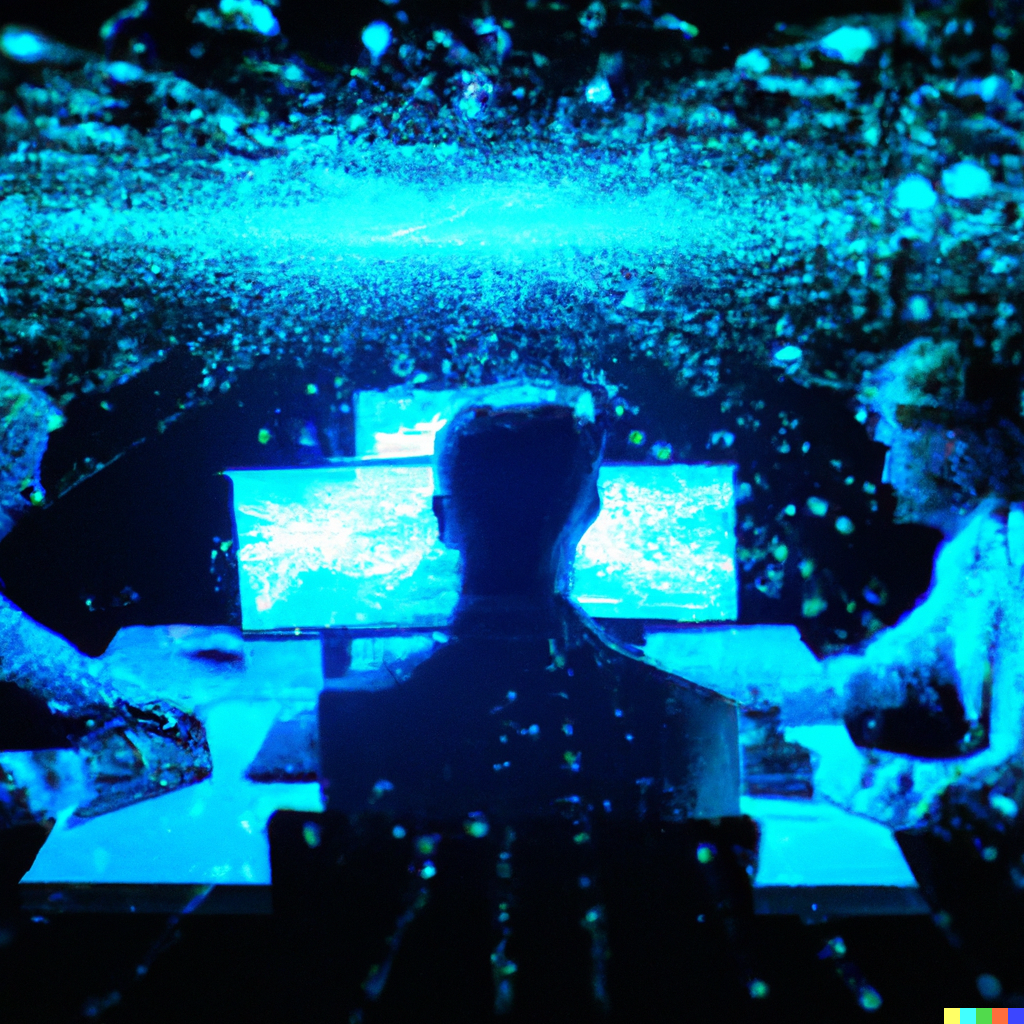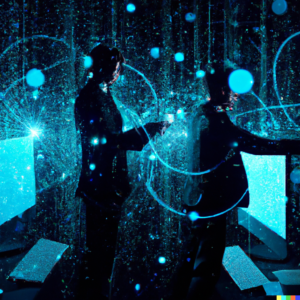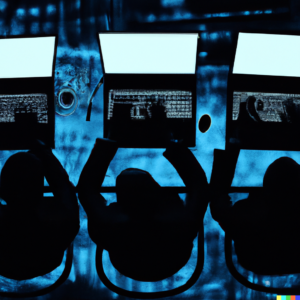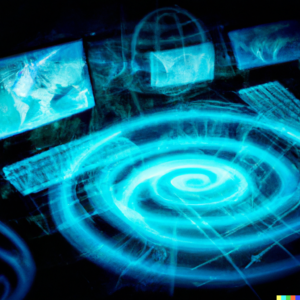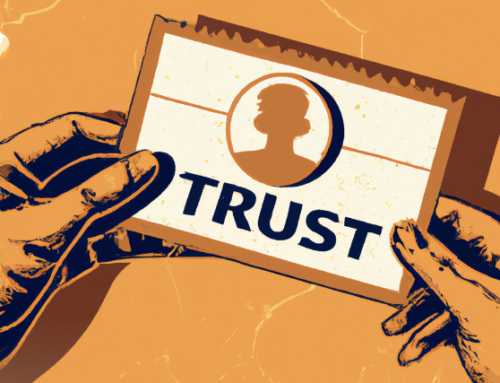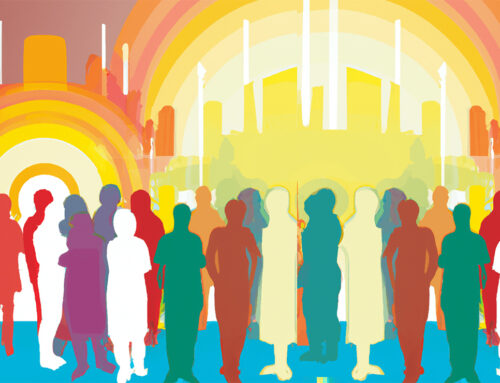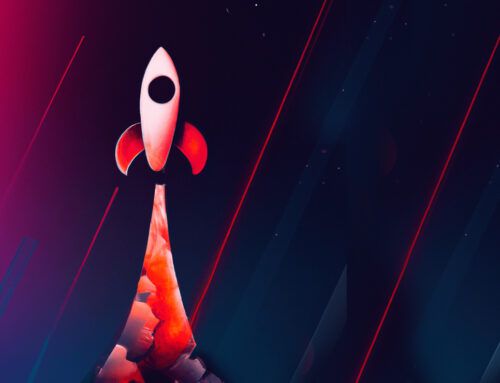By Aziz Vora, Director of Marketing
Simply put, Web 3.0 is the next evolution of the internet that promises decentralization, data security, and a user-centric medium that replaces networks with markets that are run by users and controlled by smart contracts that are embedded in tradeable tokens.
The best way to look at Web 3.0 is the “decentralized web”, meaning your internet experiences and engagements will no longer be in control of one party like a bank or technology company such as Google or Meta. The foundation of Web 3.0 is built upon blockchain technologies that work together to create an intelligent, secure, and personalized web experience for users.
Web3 is Built on Blockchain. But what is Blockchain?
Let’s start with the basics. The foundation of how Web 3.0 operates and allows for a personalized and secure internet experience lies in blockchain technology. At its core, blockchain technology is a digital ledger that records transactions in a secure and decentralized manner. Instead of a central authority, like a bank, controlling and verifying transactions, a network of computers work together to validate and record these transactions. Every computer in the network holds a copy of the digital ledger and must agree on each transaction before it is added to the blockchain. The value of this is blockchain offers a higher level of security and transparency for every transaction that takes place. Blockchain also permits faster and more efficient transactions as there is no longer a need for intermediaries to process and validate transactions.
Blockchain was first developed by Satoshi Nakamoto, who implemented the technology in tandem with Bitcoin, the world’s first decentralized digital currency. In addition to using cryptocurrencies like Bitcoin and Ethereum, blockchain is also being explored for a variety of other applications, such as supply chain management, digital identity verification, and even voting systems. Blockchain has the potential to revolutionize the way we interact with each other in the digital world.
Here are some of the main features of Web 3.0:
Decentralization
Web 3.0 is an internet for the people, by the people. It will move away from the centralized control of the web—and financial industry—we see today. This can include anything from how governments control the value of a currency, how artists engage with their fanbase to build community, or even how transactions occur in virtual gaming markets.
Decentralization is more than a feature of Web 3.0: it’s also a practice that is actively engaged in by the Web 3.0 community. One way Web 3.0 has adopted decentralization as a practice is by using Decentralized Autonomous Organizations, or DAOs, which are community-led governing organizations that have no central authority. Each DAO acts in a purely democratic process, with users casting votes on each decision. The foundation of these organizations lies in smart contracts and the technology behind Web 3.0, allowing for an autonomous, transparent process that can be publicly audited at any time.
Interoperability
Web 3.0 is designed to simplify how various systems and applications work together. This means that data and information can be shared seamlessly across different platforms, creating a better web experience. Web 3.0 is sometimes referred to as the semantic web because it strives to create improved engagement for the user. Interoperability is crucial for Web 3.0 as it allows various blockchain platforms and dApps to communicate and interact with each other, creating a more connected ecosystem of decentralized services. An example of this would be a user who wants to use a decentralized lending platform that is built on a different blockchain platform than they would typically use.
Composability
Web 3.0 is composable – similar to compound interest in finance, Web 3.0 allows for one piece of an application to help build another. Composability refers to the ability of different dApps to interact and connect with each other seamlessly. This means that various dApps can be combined and utilized together to create more advanced applications. This is made possible via open protocols and standards such as the Ethereum blockchain and smart contracts. These protocols allow dApps to interact and communicate with each other, creating an ecosystem of decentralized applications. An example of this would be a user wanting to create a new dApp that combines two existing dApps. With web 3.0 and composability, this is possible for the user by simply combining the smart contract codes of these two dApps to create a more complex application that utilizes the features of both. This enables developers to create efficient and cost-effective ecosystems of dApps by building on top of existing code as opposed to starting from scratch.
Personalization
Lastly, Web 3.0 also promises a more personalized web experience. By leveraging data and AI, Web 3.0 can create a customized experience that is tailored specifically to the users’ interests and preferences, leading to a refined and enhanced experience. Web 3.0 creates a more personalized Internet experience by utilizing blockchain technology to give users more control over their data using decentralized applications (dApps). In the traditional Web 2.0 model, centralized platforms like Meta or Google control and monetize user data, which often leads to privacy concerns and a lack of control for users over their own data.
Web 3.0 changes that by keeping user’s information securely housed in what’s known as their crypto wallet, where users retain control over what information is public and what is private.
Users thus have greater control over the information they share and can use this information to interact with other users and services in a more targeted, meaningful, personalized way. An example of this would be a user storing their decentralized identity (which is stored in their wallet, which in turn lives on a blockchain) to log in to various dApps and services, with each service accessing only the specific information the user has chosen to share. This opt-in practice also provides more reliable data for brands than third-party data collection.
Web3 in Action
Let’s look at some examples of how Web 3.0 is being used. Decentralized finance (DeFi) platforms like Uniswap and Aave are examples of Web 3.0 in action. These platforms use blockchain technology to create decentralized networks for financial transactions, allowing users to trade, lend, and borrow without relying on centralized intermediaries. Another example is non-fungible tokens (NFTs), which use blockchain technology to create unique, digital assets that can be bought, sold, and traded. Smart contracts embedded in NFTs allow for automated functions like sending royalties to the creator after each sale on primary or secondary markets and acting as a key for token-gated content like Spotify is testing with its gated playlists. The flexibility of smart contracts has only begun to be taken advantage of in industries like art, music, gaming, and sports. But NFTs and their smart contract capabilities can power many more advanced use cases as well, such as automating an Escrow account for a property loan, tracking the title and history of a vehicle, or even holding an individual’s medical records.
What is Web 3.0? The future of the Internet
The future of the internet is an exciting and rapidly evolving space. One of the most promising areas of development is the creation of decentralized (DeFi) applications. DeFi uses blockchain technology to create financial applications that are open, transparent, and accessible to everyone regardless of their location or financial status. These applications can include lending and borrowing platforms, decentralized exchanges for trading cryptocurrencies, and even prediction markets. By utilizing a blockchain, DeFi applications offer greater security, transparency, and accessibility than traditional financial systems.
Another example would be the development of decentralized marketplaces which allow users to buy and sell goods and services directly with each other, without the need for intermediaries like Amazon or eBay. This allows users to have greater control and ownership for both buyers and sellers as they can transact directly with each other.
Web 3.0 is also being utilized to develop decentralized social media platforms. These platforms aim to create a more democratic and user-owned social media experience, where users have greater control over their data and the content they see. These platforms can create decentralized networks that are resistant to censorship or manipulation.
Web 1.0 was static – what you saw was what you got, and no data was being pulled in from other sources to create a better experience for the user (like what an RSS feed was before Twitter). Web 2.0 provides more personalization of web engagements and a wider reach for creators, but at the expense of data privacy and trivialization of content. Instead of the users being the data and corporations owning the platforms, Web 3.0 allows for an internet where users are the owners and benefactors who own the platforms.
The possibilities are endless. And we are here for it.

